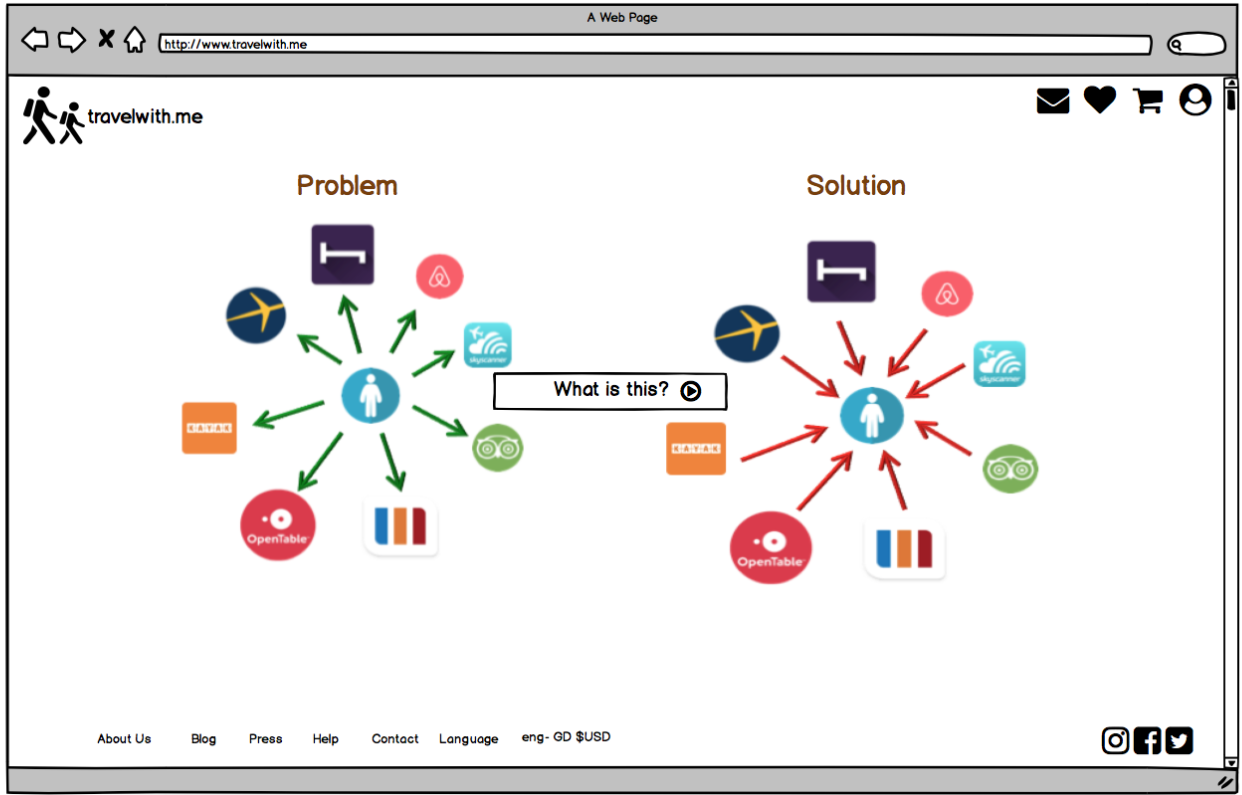travelwith.me
This idea was conceived during a Product Management program as a test product, implementing the product cycle and processes. It was an individual study aimed at exploring ways to disrupt the travel industry.
Problem
Travelwith.me is designed to increase the efficiency of researching, planning, and experiencing a trip using a one-stop personalized platform leveraging artificial intelligence and trusted partners. I have observed that all travel service sites are not structured to provide an individualized and holistic trip experience, which is causing planners to spend many hours on numerous sites and at times canceling or delaying their trip.
Why travelwith.me...
Because I believe there is a better way to plan, book, share, and organize your trips, as well as access experiences around you.
What is Travelwith.me?
It is a one-stop travel planning and service platform that provides everything you need for travel in one place. It integrates the best travel companies, offers trip storage and sharing capabilities, provides a single payment solution for bookings, and personalizes your trips based on your preferences.
Main Assumptions of the Problem Today:
It's stressful and time-consuming to plan trips.
Users have to visit multiple sites for different travel needs.
There's no convenient place to share and store trip details.
Main Risks:
Risk: Users won't want to switch.
Test: Build a mockup site featuring popular travel companies and gauge user interest through sign-ups and site visits.
Risk: Companies won't want to partner up.
Test: Present the mockup and user interest to potential partners, emphasizing the benefits of integration.
Risk: Data collection and integration may fail.
Test: Share the vision with experienced engineers and test integration with a fundamental company to assess data interaction.
Personas and User Research
Customer Interview Takeaways
Desktops are primarily used for searching and booking trips, while phones are commonly used during the trip.
People typically visit about 5 to 17 websites when planning a trip.
There are various methods for storing and sharing travel plans.
Individuals travel 1 to 3 times a year for leisure, while some travel 1 to 2 times a month for work.
Approximately 45% of people start their trip search with Google.
The timeline for trip planning varies: international trips take weeks to months, while domestic trips take hours to days.
User Journey
Low Fidelity Wireframes
MVP
Used Balsamiq to create MVP slides.








User Stories & Acceptance Criteria User Stories
Market & Competitors
Market
Airbnb: 2016 - 44.8 million users; 2021 - 86.5 million users
Expedia: 2017 - 88.41 million users
TripAdvisor: 2016 - 460 million user reviews
OpenTable: 2018 - 24 million diners per month
Estimated market for travel planning services: 40-80 million users (excluding individual airlines)
Competitors
Tripit
Issue: Requires users to manually email all bookings to create a consolidated itinerary, resulting in time wastage
Google Trips/Flights
Issue: Users need to return to the original booking site to make payments after finding flights, information stored in Gmail is limited to individually found bookings
Expedia, Skyscanner & Hopper
Issue: Limited to their own data, cluttered interfaces, and hidden features
Utrip (concierge), TripHobo (booking) & Journy
Issue: Users incur additional costs and may not have access to all available resources despite paying










